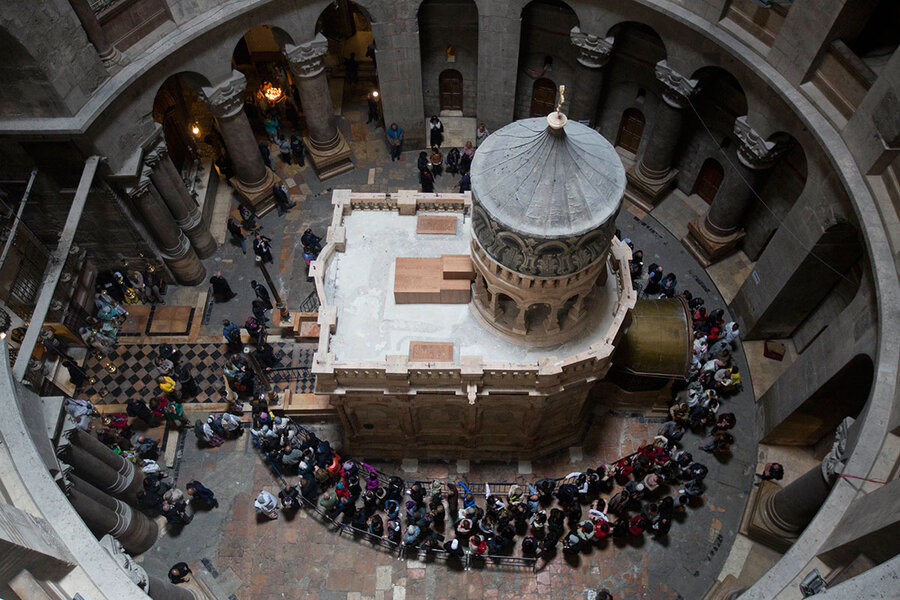Legendary tomb of Jesus resurrected
Loading...
After centuries of disrepair, one of Christianity’s holiest sites returns to life.
Believed by the devout to house the tomb of Jesus Christ, Jerusalem’s Church of the Holy Sepulchre will open to the public on Wednesday after nearly a year of restoration. An ongoing dispute between the religious groups controlling the site had brought the burial place, known as the Edicule, to the brink of collapse.
"We are at the critical moment for rehabilitating the Edicule," director of the restoration Antonia Moropoulou told National Geographic. "The techniques we're using to document this unique monument will enable the world to study our findings as if they themselves were in the tomb of Christ."
Centuries-long cycles of ruin and restoration have afflicted the structure. An earthquake damaged the shrine in 1927, and the British carried out external repairs in 1947, but it took a warning from Israeli authorities that the building was becoming unsafe to prompt the controlling groups to set aside their differences and allow proper repairs to proceed.
Ever since a 1752 Ottoman Turkish edict, six Christian groups (Roman Catholics, Greek Orthodox, Armenian Orthodox, Syrian Orthodox, Copts, and Ethiopians) have shared jurisdiction over the church in an uneasy truce known as the "Status Quo."
Tensions between the denominations run high, even in modern times. In 2002 an ecclesiastical fistfight broke out after an Egyptian (Coptic) monk shifted his chair into the shade, allegedly violating Ethiopian territory. The more complicated task of negotiating invasive repairs to the holy site was a stumbling block for decades.
But the aging structure's decay paid no heed to the squabbles of man, forcing their hand. “If this intervention hadn’t happened now, there is a very great risk that there could have been a collapse,” Bonnie Burnham of the World Monuments Fund told CBS. “This is a complete transformation of the monument.”
As part of the restoration, a team from the National Technical University of Athens has removed the marble that covered the tomb for at least 500 years, revealing a treasure trove of material for scientists and historians of early Christianity.
“It will be a long scientific analysis, but we will finally be able to see the original rock surface on which, according to tradition, the body of Christ was laid," said Fredrik Hiebert, archaeologist-in-residence at the National Geographic Society, a partner in the restoration project.
Dr. Hiebert refers to one target of intense interest, the limestone shelf where Christ’s body was brought after his crucifixion in 30 A.D., according to Christian tradition. Followers who came to the tomb three days later found it empty after his resurrection, the story goes.
Starting Wednesday, for the first time in centuries tourists and pilgrims will be able to follow in the footsteps of these early Christians, witnessing the interior of the holy site with their own eyes.
Each stakeholder contributed to the project, which came in at over $4 million, including personal gifts from Jordan's King Abdullah II and architectural designer Mica Ertegun.
Despite centuries of conflict, some see seeds of peace in this cooperation wrought of necessity.
"I'm glad that the atmosphere is special, there is a hidden joy," Theophilos III, the Greek Patriarch of Jerusalem, told National Geographic. "Here we have Franciscans, Armenians, Greeks, Muslim guards, and Jewish police officers. We hope and we pray that this will be a real message that the impossible can become the possible. We all need peace and mutual respect."
This report contains materials from Reuters.








